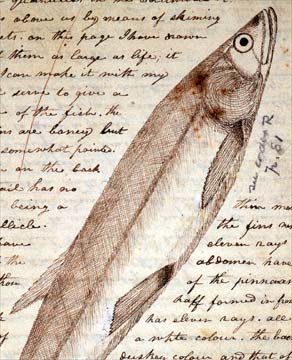forum
library
tutorial
contact

Saving Salmon on the Yakama
by Nathan ThornburghTime Magazine, June 30, 2002
|
the film forum library tutorial contact |

|
Saving Salmon on the Yakamaby Nathan ThornburghTime Magazine, June 30, 2002 |
 When Lewis and Clark came upon the mouth of the Yakima River where it meets the Columbia, they beheld a scene that perplexed them. Clark wrote, "This river is remarkably Clear and Crouded with Salmon in manye places and I observe in assending great numbers of Salmon dead on the Shores, floating on the water and in the Bottoms which can be seen at the debth of 20 feet."
When Lewis and Clark came upon the mouth of the Yakima River where it meets the Columbia, they beheld a scene that perplexed them. Clark wrote, "This river is remarkably Clear and Crouded with Salmon in manye places and I observe in assending great numbers of Salmon dead on the Shores, floating on the water and in the Bottoms which can be seen at the debth of 20 feet."
Lewis and Clark were witnesses to the mighty salmon migration to the Yakima River — millions of fish returning to their natal streams, spawning and dying, and in the process stocking a food chain that extended from crabs to birds, bears and man. To the explorers, who had spent much of the previous winter near starvation, this river of food was overwhelming, especially since they suspected that the 20-lb. fish were succumbing to disease.
The real death spiral would come later, during the 20th century. Industrialization has reduced the great salmon migration by an estimated 97 percent. With 14 dams on the main stem of the Columbia and about 250 more on tributaries throughout Washington, Oregon and Idaho, the watershed today is both an engineering masterpiece and an environmental catastrophe. Now a battle to save the salmon has broken out, casting Native Americans, environmentalists, government and industry in a philosophical fight over how to rebuild both the wild-salmon stock and the fishery that was once a principal food source for the tribes.
The Yakama and three other tribes of the Columbia Basin have banded together to propose a program called Spirit of the Salmon, a 25-year plan for reviving salmon populations by restoring the habitat over the long term and breeding a lot of fish in the short term. The Yakama (their preferred spelling) believe they have found a solution in the $18 million Cle Elum Supplementation Research Facility, a salmon hatchery founded in 1997.
In its first four years alone, the facility produced over 2.5 million young Chinook, and based on early returns, hatchery officials expect up to 75,000 of those to return as adults and spawn in the Upper Yakima. To improve this number, there are portions of the incubation center cordoned off for studies in breeding and behavior. The Yakama hope that their spiritual authority on salmon issues, combined with hard data, will create an airtight case for the right of hatchery salmon to coexist with wild salmon in the Yakima River.
It's a case that neither the Federal Government nor environmentalists are buying. The government is in the precarious position of being the major producer of hatchery fish, while also believing that the fish they produce are unworthy of interbreeding with wild populations. In order to prevent hatchery fish, which in the past have shown poor survival skills, from dumbing down the wild gene pool, they've even resorted to wholesale slaughter of excess hatchery fish in other rivers. An estimated 80 percent of all salmon in the Columbia River Basin are hatchery fish, and conservation groups like Idaho Rivers and Save Our Wild Salmon want to staunch the flood of hatchery salmon into the rivers, saying that they are a feeble long-term replacement for the wild populations they are crowding out.
"The problem with hatchery fish," says Bert Bowler, a fish biologist with Idaho Rivers, "is that they're not sustainable. They're on welfare." The only solution, conservationists say, is to breach the dams, restore the salmon's natural habitat and allow the wild populations to stage a comeback. The Cle Elum hatchery is, in some respects, trying to meet them halfway. Fifty percent of its hatchlings are put through an innovative "boot camp" in real-world survival skills so that future generations will behave like naturally wild fish. The walls of their concrete pens are painted camouflage to stimulate the production of pigments that will mask them in the wild. Old Christmas trees and military netting in the water encourage the fish to hide under river debris.
As their final exam, the penned fish are subject to attacks from mergansers, diving birds with a voracious appetite for young salmon. The idea is to teach the fish a valuable lesson in predator avoidance. The graduates are released into the river to battle for their survival, while the fight over their future is fought in the courts, on reservations and in laboratories.
learn more on topics covered in the film
see the video
read the script
learn the songs
discussion forum
